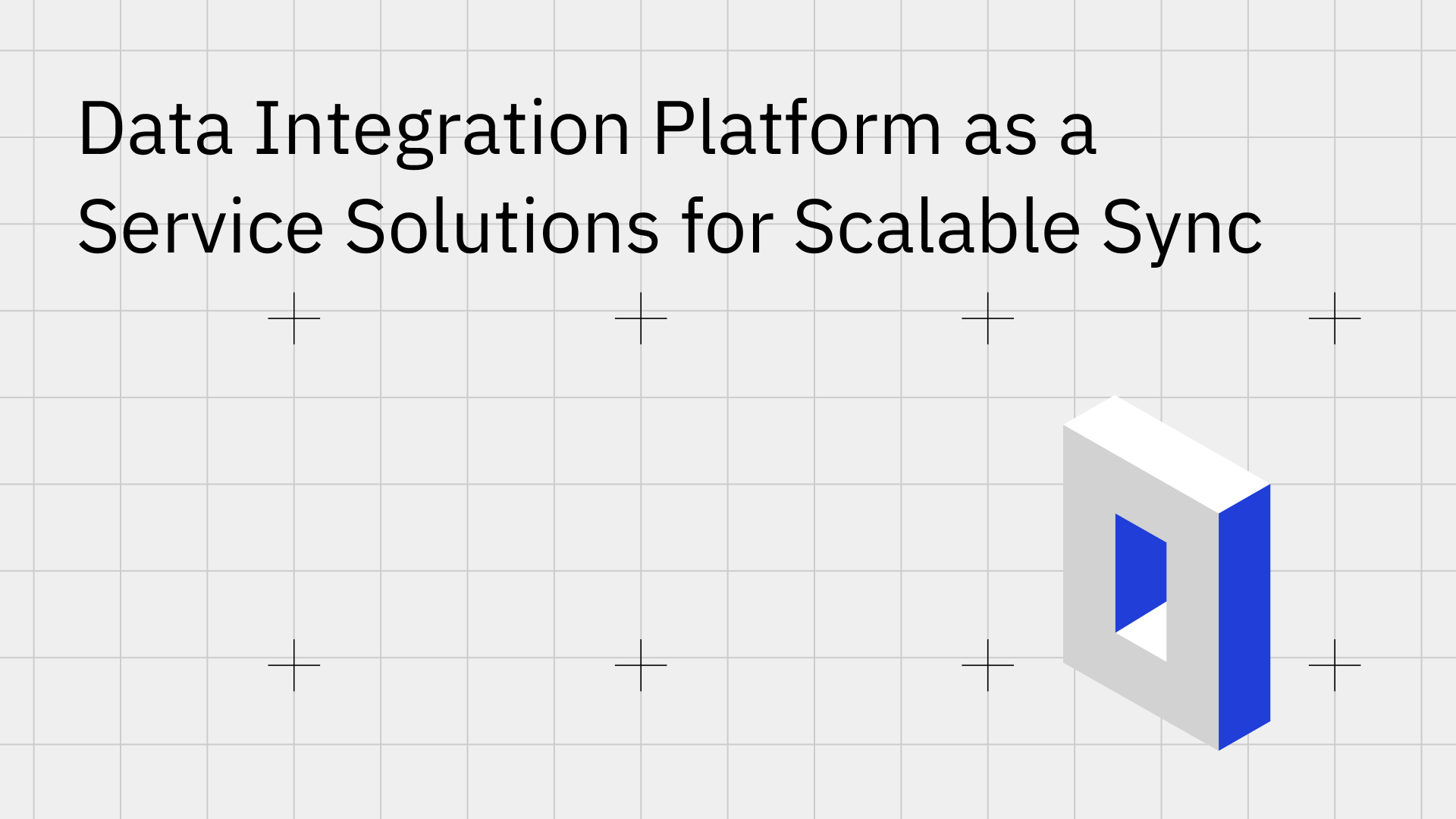
In the modern enterprise, data is fragmented. Your customer data lives in Salesforce, your product data in a PostgreSQL database, your financial records in NetSuite, and your support tickets in Zendesk. This distribution across specialized, best-in-class applications creates operational data silos. The direct consequence is inefficiency, data inconsistency, and a significant engineering burden to build and maintain the brittle, custom-coded "plumbing" required to connect these systems.
The technical challenge is not merely moving data; it is about maintaining data integrity in real-time, at scale. Traditional batch-processing ETL jobs create unacceptable latency for operational workflows. Custom API integrations are resource-intensive to build and fragile to maintain, consuming a significant portion of an engineering team's time. This is where a Data Integration Platform as a Service (iPaaS) becomes critical. An iPaaS provides a centralized, managed solution for connecting applications and synchronizing data, but not all platforms are engineered to solve the same problems.
This article provides a technical comparison of data integration solutions, helping you select the right platform for scalable, reliable data synchronization.
Effective data integration must address several fundamental technical problems. A failure in any of these areas can lead to data corruption, operational downtime, and a loss of trust in the underlying data.
The iPaaS market is diverse, with tools optimized for different use cases. Choosing the right one requires understanding their core architectural differences. General-purpose platforms offer broad capabilities, while specialized tools provide optimized solutions for specific problems like real-time streaming or marketing analytics [1], [2].
The table below provides a high-level comparison of different categories of data integration tools.
The optimal choice of an integration platform depends entirely on the problem you are solving.
If your primary goal is to centralize data from multiple sources into a data warehouse like Snowflake or BigQuery for analysis, a traditional ETL/ELT platform is the correct tool. These platforms are highly optimized for one-way, batch data movement and provide a vast library of connectors for SaaS applications and databases. Their focus is on delivering data for analytical queries, not powering real-time operational processes.
Large enterprises with a mix of legacy on-premises systems and modern cloud applications may require a comprehensive iPaaS like TIBCO Cloud Integration or IBM App Connect [3], [2]. These platforms are powerful orchestration engines capable of handling complex, multi-step business processes. However, this power comes with significant complexity and often requires a dedicated team of specialized integration developers.
This is the most demanding use case and where most generic tools fall short. When your business operations depend on your CRM, ERP, and production databases being perfectly synchronized, you have a different class of problem.
The Problem: A deal marked Closed-Won in Salesforce must instantly trigger a provisioning workflow, create an invoice in NetSuite, and update the customer's status in your production PostgreSQL database. Any delay or data inconsistency directly impacts revenue and customer experience.
The Solution: This scenario requires a platform architected specifically for real-time, bi-directional synchronization. Stacksync is a purpose-built solution for this challenge. Unlike platforms that simulate two-way sync by running two separate one-way pipelines, Stacksync provides true bi-directional synchronization with built-in conflict resolution, guaranteeing data consistency at the field level.
It is engineered to abstract away the "dirty API plumbing" that consumes engineering cycles. The platform automatically handles authentication, pagination, rate limiting, and error retries, all configured through a no-code interface. This allows engineering teams to stop maintaining brittle integration scripts and focus on building core product features, empowering them to deliver value faster.
Adopting a platform designed for operational synchronization delivers tangible technical and business advantages.
Many modern iPaaS solutions offer no-code interfaces to accelerate development. This approach democratizes integration, allowing business analysts and operations teams to configure data flows without writing code.
For teams evaluating solutions, the "free" entry point is typically a free trial. This is a critical step in the evaluation process. Platforms like Stacksync offer a 14-day free trial, providing full access to the platform's capabilities. This allows your team to connect your actual systems—like a Salesforce sandbox and a staging database—and validate the performance, reliability, and ease of use with your own data before making a commitment. This hands-on validation is the most effective way to mitigate risk and ensure the chosen solution meets your specific technical requirements.
Selecting a data integration platform is a critical architectural decision. The "best" tool is the one engineered for your specific technical challenge. For BI and analytics, one-way ETL/ELT platforms are the standard. For complex enterprise orchestration, a general-purpose iPaaS may be required.
However, for the increasingly common and mission-critical need to maintain real-time, consistent data across operational systems, a purpose-built bi-directional sync platform is the superior technical solution. By abstracting away complexity and guaranteeing data integrity, platforms like Stacksync transform data integration from a fragile, high-maintenance cost center into a reliable, scalable, and empowering operational backbone for your business.